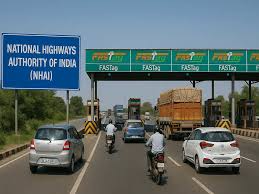What is the FASTag annual pass scheme that Modi govt is planning to launch?

In a move aimed at transforming the way Indians pay for road travel, the central government is set to roll out a new FASTag Annual Pass Scheme from August 15, 2025. The initiative, championed by Union Minister Nitin Gadkari, promises to bring cost efficiency and convenience to lakhs of private vehicle owners who regularly use India’s vast network of highways. This innovative scheme could be a game changer for frequent commuters and marks another major step toward a cashless, contactless, and congestion-free toll system.
Let’s dive deep into what this scheme is, how it works, and why it could redefine your travel experience on Indian roads.
What Is the FASTag Annual Pass?
The FASTag Annual Pass is a prepaid tolling plan designed for private, non-commercial vehicles such as cars, jeeps, and vans. Under this scheme, vehicle owners can pay ₹3,000 in advance and get access to 200 toll plaza crossings or one year of travel, whichever comes first. After the 200 trips are exhausted or the year ends, the user’s FASTag will automatically revert to the regular pay-as-you-go model.
This new feature will be integrated with the existing FASTag ecosystem, meaning that users won’t need a separate tag or account. They simply have to opt into the annual pass through the NHAI portal, Rajmarg Yatra app, or authorized banks and wallet providers.
Why Was It Introduced?
The government’s vision for this pass goes beyond just saving toll fees. The scheme is part of a broader goal to:
- Reduce traffic congestion at toll booths
- Eliminate cash transactions on highways
- Encourage digital mobility infrastructure
- Offer relief to daily and weekly commuters who face high toll costs
India has been making rapid progress in expanding its highway network, but bottlenecks at toll plazas often undermine the experience. This prepaid model helps ease those issues, as it reduces delays and provides transparency in toll charges.
Major Features of the Annual Pass
Here’s a closer look at the key highlights of the new FASTag Annual Pass:
| Feature | Details |
|---|---|
| Cost | ₹3,000 per year |
| Validity | 200 trips or 12 months (whichever is earlier) |
| Eligibility | Private, non-commercial vehicles only |
| Start Date | August 15, 2025 |
| Activation | Via Rajmarg Yatra app, NHAI site, or partner banks |
| Reactivation | After expiry, pay again for a new year/pass |
| Fallback Mode | Returns to regular toll deduction after limit |
How Does It Benefit You?
The most attractive aspect of the scheme is the potential for savings. For people who travel long distances frequently—say, between cities for work, family visits, or business—this scheme can cut down toll expenses by up to 70%.
For instance, let’s assume a commuter drives daily on a route that charges ₹50 at the toll plaza. That’s ₹100 per day for a round trip. Over a month, that becomes ₹3,000—and nearly ₹36,000 annually. Now, with the annual pass, the same person can complete 200 such trips for just ₹3,000. The effective savings could be over ₹30,000 in a year.
Even for those who don’t commute daily but travel frequently, this prepaid model offers significant financial relief.
Flexibility for Occasional Users
What if you’re not a frequent traveller? The government has taken care of that too. For occasional users, a distance-based toll model will remain in place. For example, a charge of ₹50 per 100 kilometres travelled is proposed. So if you’re hitting the highways once a month or going on vacations, this pay-as-you-go option might be more suitable.
This dual model ensures that both frequent and occasional travellers can pick what suits their needs.
A Step Towards Barrier-Free Tolling
The FASTag Annual Pass is not a standalone move—it fits into the government’s larger plan of introducing barrierless, GPS-based tolling systems in the near future. Trials are already underway to replace toll plazas with automatic number plate recognition (ANPR) and satellite tracking. With systems like these, vehicles can be charged dynamically based on the actual distance travelled, eliminating the need for stopping at toll booths altogether.
Minister Gadkari has emphasized that India is on track to eliminate toll booths entirely by 2027. The annual pass initiative is seen as a bridge solution until that larger goal is achieved.
Concerns and Revenue Impact
While the scheme is promising for citizens, some industry experts have raised concerns. Toll operators may witness a reduction in revenue, especially if a large chunk of frequent travellers shift to the annual pass model. According to analysts, revenue dips between 4–8% are likely if around 30% of private vehicle users subscribe.
To address this, the Ministry of Road Transport and Highways is working on compensation frameworks and revised concession agreements with toll operators to balance the financial impact.
Conclusion: A Boon for Road Travellers
The FASTag Annual Pass scheme is an ambitious, user-friendly initiative that aligns with India’s digital and infrastructural goals. For daily commuters, it offers massive cost savings and a streamlined experience. For the government, it represents a step closer to modern, frictionless road travel. And for the broader economy, it reduces idle time and fuel consumption—contributing to both productivity and sustainability.
If you’re someone who frequently drives on national highways, this scheme could become your best travel companion. It’s smart, economical, and future-ready—just like the roads India is now building.






